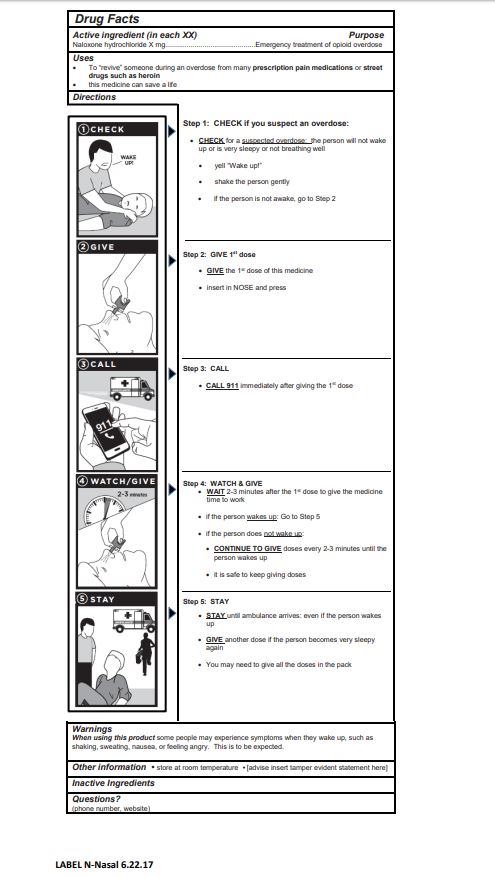Substance Use Disorder
Blog Post
Selling Naloxone Over the Counter Likely to Boost Sales
CHERISH investigators model out-of-pocket price and demand
In a new study in Health Services Research, our colleagues at CHERISH (Center for Health Economics of Treatment Interventions for Substance Use Disorder, HCV, and HIV) use pharmaceutical claims data to predict the effect of converting naloxone to OTC status on retail pharmacy sales. By modeling supply and demand factors of naloxone, they predict that pharmacy sales would increase by at least 15%, and possibly up to 179%, if naloxone was sold OTC.
What went into the economic model
Let’s take a look at how Sean Murphy, Jake Morgan, Philip Jeng, and Bruce Schackman arrived at their prediction. First, they used a nationwide prescription claims dataset for 2010-2017 (covering 80% of retail pharmacies and including out-of-pocket prices) to estimate how sensitive naloxone buyers are to price. They found that buyers of naloxone are not very price-sensitive: on average, a 10% increase in out-of-pocket price would produce a 2.7% decrease in sales.
Then they looked to the literature to find estimates on the price and demand effects of conversion to OTC status for other drugs. In particular, they focused on nicotine replacement therapies as the only other substance use disorder medication that had converted from prescription to OTC status. They found that, upon conversion, the demand for nicotine patches and gum rose 78% and 180%, respectively; out-of-pocket prices rose an estimated 26% for patches and 33% for gum, on average. Four other drugs (cromolyn sodium—Nasalcrom®, tioconazole—Vagistat®, ketoconazole—Nizoral®, and terbinafine—Lamisil®) experienced a range of price increases from 2% to 233% following OTC conversion, depending on insurance type. The authors used these wide ranges in their models to predict the change in naloxone sales, given the relative price insensitivity of naloxone buyers.
Thus, they predict an increase in naloxone sales of 15%-77% using the estimated demand for nicotine patches, and 117%-179% using the estimate for nicotine gum. If, for example, naloxone out-of-pocket prices increase after conversion at the estimated level of nicotine patches (26%) or nicotine gum (33%), the authors predict a 71% to 171% increase in naloxone sales.
Public health impact
All else being equal, greater sales of naloxone should increase the opportunities to reverse opioid overdoses. But the authors are careful to say that the public health impact of increased sales will depend on how the purchasers of over-the-counter naloxone differ from current purchasers in their likelihood of observing an overdose and using the product. That’s not something this study can answer, but is something that should be monitored. As the authors note, if insurers for low-income people, who may be more sensitive to price increases, turn out to be less likely to continue coverage of naloxone after OTC conversion, economic disparities in access could actually increase.
An important and timely contribution
This study comes at a critically important time, as policymakers seek ways to reduce barriers to using naloxone. Last year, the US Surgeon General Adams called naloxone a “safe antidote” to a suspected overdose, and urged more individuals to carry naloxone, including family, friends, community members, and those who are personally at risk. At last count, 42 states and DC have passed standing order laws that allow pharmacists to dispense naloxone without a patient-specific prescription. However, a recent study by Penn and CHERISH investigators found that pharmacy staff often lack awareness or specific knowledge of the standing order.
Earlier this year, the Food and Drug Administration took the unprecedented step of developing and validating model Drug Facts Labels for naloxone as a nasal spray and an autoinjector to encourage companies to enter the OTC market. The model labels can be used by sponsors to obtain OTC approval for naloxone. The FDA has opened this doorway, and is inviting manufacturers to step in.
FDA’s Model Drug Facts Label for naloxone nasal spray (click for full size) ⇒

The article, “Will converting naloxone to over‐the‐counter status increase pharmacy sales?” by Sean M. Murphy, PhD, Jake R. Morgan, PhD, Philip J. Jeng, MS, and Bruce R. Schackman, PhD was published online in Health Services Research on February 20, 2019.